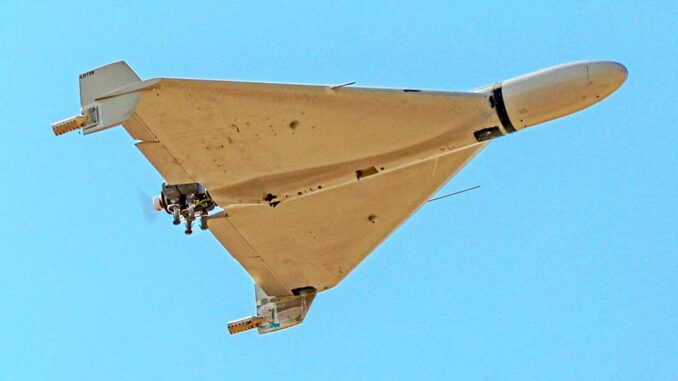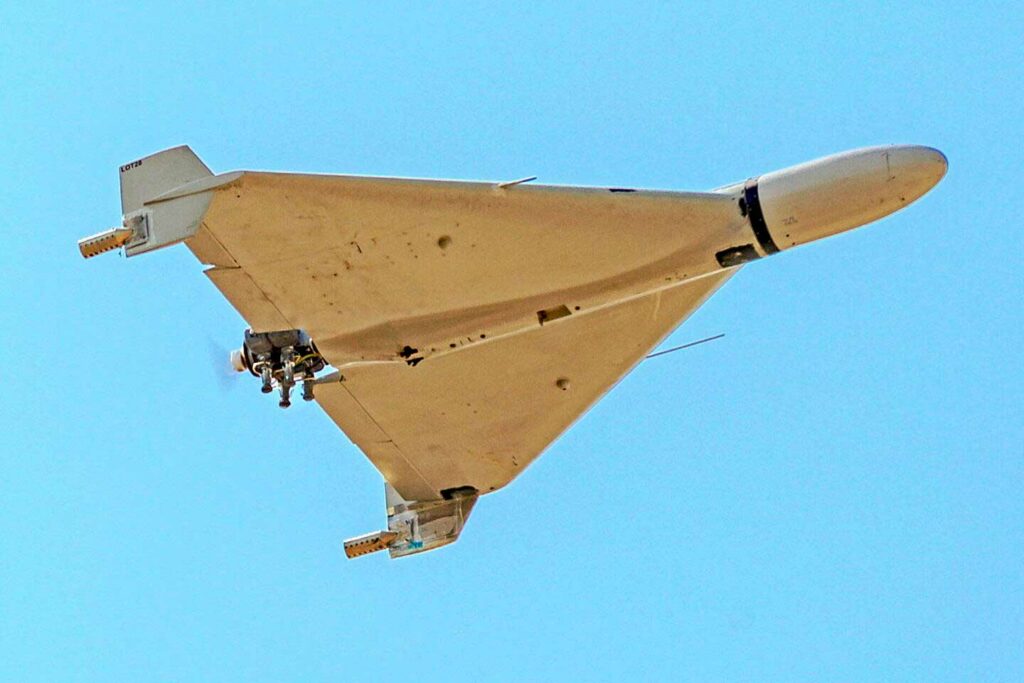
A Chinese anti-jamming antenna, TDXL-KGR1101, will appear on AliExpress. It facilitates the navigation of Shahed drones despite GPS interference.
China is now marketing an 11-element anti-jamming antenna, called TDXL-KGR1101, compatible with BeiDou and GLONASS. Used in Shahed kamikaze drones, it maintains navigation accuracy despite jamming attempts, increasing the threat to defense systems. Sold for around $3,290 on AliExpress, this publicly available technology poses an immediate strategic risk.
Context and technical purpose of the component
The TDXL‑KGR1101 antenna, listed on AliExpress at approximately $3,290 (≈ ≈ 3,050 EUR at current rates), is an 11-element anti-jamming antenna designed for BeiDou BDS-4B3 and 4S signals, compatible with B1I, B1C, L1, as well as GLONASS, with L-band transmission; it is listed on a major e-commerce site.
The anti-jamming units are symmetrically arranged, ensuring uniform gain across all elements, wide elevation coverage at high or low angles, a wide gain spectrum, and strong circular polarization. The ports feature strong isolation to limit cross-interference. The antenna is resistant to extreme temperatures and corrosion, suitable for onboard, motorized, or marine deployments.
Technically, an antenna with a high number of elements (11 in this case) enhances the ability to withstand multiple or powerful blockers; the use of a CRPA (Controlled Reception Pattern Antenna) improves resistance to GNSS spoofing or jamming—as observed in the Shahed drones.
Real-world example: According to Defense News, these Shahed drones carry explosive payloads of around 90 kg, capable of targeted destruction in urban environments. A more sophisticated antenna maximizes their accuracy despite enemy electronic devices.
Impact on electronic warfare and defense
Exploring the strategic scope, adaptation of enemy tactics, financial costs, and practical implications.
The public marketing of a critical component represents a technological breakthrough in the field of electronic warfare. This component appears in Shahed drones, used extensively by Russia in particular, enabling resilience to jamming.
According to reports, Ukraine has detected Shahed drones using Chinese CRPA antennas with 8 to 16 elements, forcing Ukrainian forces to increase the deployment of jamming systems.
An 11-element CRPA system increases robustness against multiple jamming attempts. This leads to increased costs and tactical complexity for the defender, as the response requires more jammers, radar surveillance networks, or close defense systems.
Key figures: Russian production of Geran-2 drones / Shahed-136 drones could reach 170 to 190 units per day, with a stockpile of 6,000 Geran-2 drones and 6,000 decoys, causing nearly 2,736 attacks in June 2025, or 28,743 since the start of the conflict.
The integration of autonomous units equipped with AI, thermal cameras, Jetson Orin, and CRPA, as in the Shahed-136 MS version, further complicates defense: these drones can identify and target visually or thermally, without relying on GPS.
In this context, the appearance of such a component on a consumer website makes advanced technology available to non-state or less monitored actors, exacerbating international security challenges.

Consequences and outlook
Analysis of long-term repercussions, geopolitical issues, and adaptation requirements.
Now accessible to everyone, including potentially non-state groups, the TDXL-KGR1101 antenna highlights the vulnerability of dual-use technology regulation, both civil and military. Efforts to control exports are hampered by the ease of online purchasing.
Knocking on traditional borders: Ukraine and its allies must increase the number of jammers, reassess electronic coverage, invest in thermal or acoustic detectors, strengthen physical protections at strategic sites, and adapt their air defense doctrine.
Economically speaking, even though these sophisticated drones cost €40,000 to €50,000 each, compared to €20,000–€30,000 for a standard version, they are still much cheaper than a cruise missile (≈€1 million) while offering high terminal effectiveness.
Geostrategy: this situation illustrates the high level of technological cooperation between China, Iran, and Russia, against a backdrop of Western sanctions. Technological dumping leads to structural imbalances, particularly in favor of powers determined to circumvent restrictions.
In the medium term, defenders must deploy adaptive electronic warfare systems, diversify their tactics (passive radar, interceptor drones, defense AI), strengthen cyber resilience, and establish international technology governance agreements to limit access to these components.
War Wings Daily is an independant magazine.